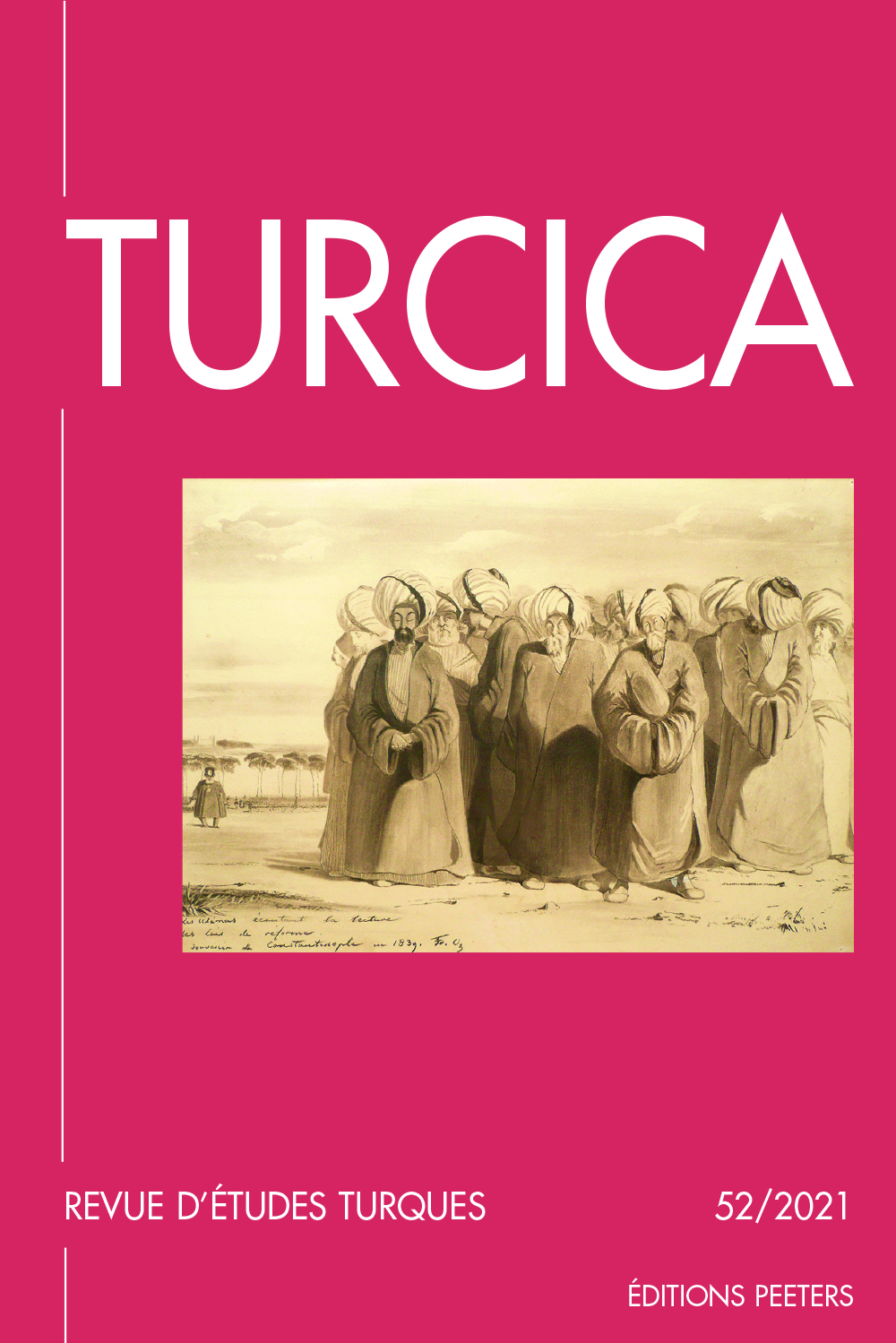 previous article in this issue previous article in this issue | next article in this issue  |

Preview first page |
Document Details : Title: L'État, l'Église et le notable chrétien de la ville ottomane des Balkans, avant les Tanzimat Author(s): TSIKALOUDAKI, Maria Journal: Turcica Volume: 38 Date: 2006 Pages: 213-232 DOI: 10.2143/TURC.38.0.2021274 Abstract : L'article traite de deux questions importantes qui ressortent d'une analyse comparative des documents ecclésiastiques provenant des villes de Serres, Moschopolis, Kozani et Philippopoli. La discussion porte d'abord sur la notion de notabilité locale dans les communautés chrétiennes hellénophones des villes ottomanes des Balkans avant les réformes des Tanzimat. On constate que les sources grecques n'apportent guère de lumière sur la notion de notable. En dehors de diverses autorités institutionnelles telles que les membres du clergé, les archontes, les anciens et les chefs des artisans, les marchands pourraient, eux aussi, être rangés parmi les élites dominantes des communautés chrétiennes. La seconde question abordée consiste à se demander si le statut dont jouissaient les notables chrétiens (proestoi) à l'intérieur de leur communauté se retrouvait à l'extérieur; en d'autres termes, si les proestoi étaient reconnus comme tels par les représentants de l'Etat qui constituaient les autorités urbaines. Pour répondre, il faut comparer la catégorie sociale des proestoi à celle des a'yan ve eşrâf, de manière à établir non seulement s'ils se comportaient, mais s'ils étaient représentés de la même façon. Il faut souligner que si les concepts ottoman et grec de notable local peuvent différer sur des points essentiels, il n'en demeure pas moins que, dans la pratique, la notabilité locale semble revêtir un même contenu dans l'un et l'autre milieux. Plutôt que de former des groupes distincts associés à des privilèges, les membres des élites locales, tant musulmans qu'infidèles, constituaient un groupe de fait. Comme tels, ils se distinguaient par leur capacité à influencer les affaires locales qui résultait de leur insertion dans de puissants réseaux de relations, tant au niveau local que central. The present paper discusses two major issues that emerge from the comparative analysis of ecclesiastical documents from the cities of Serres, Moschopolis, Kozani and Philippopoli. At first the discussion will focus on the notion of local notability in Christian Greek-speaking communities in Ottoman cities in the Balkans before the Tanzimat reforms. We observe that the Greek sources shed no light on the notion of the notable. Apart from various institutional leaders such as the clericals, the archonts, the elders and the chief artisans, merchants too could be classified among the ruling elites of the Christian communities. Subsequently, we will investigate whether the status that the Christian notables (proestoi) enjoyed outside their community was analogous to their status within it; in other words, whether the proestoi were recognised as such by the state’s representatives that constituted the urban authorities. This will be achieved by means of comparing the social category of the proestoi with that of the a’yan ve eşraf, so as to find out whether they behaved but also whether they were represented similarly. It should be stressed that, despite the fact that the Ottoman and Greek concepts of local notability may differ in the basic points, in practice the local notable seems to entail the same content in both milieus. Rather than forming distinct groups associated with privileges, the members of local elites, both the Muslim and the infidels, constituted a group “de fait”. As such, they were distinguished by their ability to influence local affairs, which resulted from their involvement in powerful networks established on local and central levels. |
 |


